By Dianne Solis
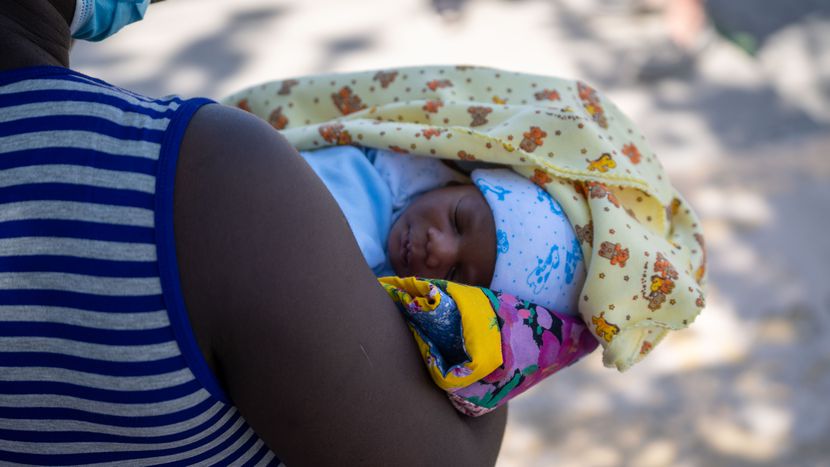
DEL RIO, Texas — By this weekend, the sprawling squalid migrant camp near the international bridge here was silent. At least 15,000 mostly Haitian migrants had come and gone.
When it comes to the fight for sympathy from the hearts of Americans, Haitians may have the edge. But the get-tough policies played out in this small border town between a federal government led by Democrats and the state of Texas headed by Republicans mean expulsion flights back to Haiti continue.
After thousands of mostly Haitian migrants streamed across the banks of the Rio Grande here to seek asylum in the U.S, the nation recoiled at now-viral images of federal agents on horseback chasing down desperate Black migrants, and of those migrants sleeping under open skies in a sprawling camp near a now-closed international bridge.
Some were quickly expelled, flown back to a homeland still in crisis over a poor economy, natural disasters and a presidential assassination in July. But many others were allowed to head to the U.S. interior. Few regretted their long journey, propelled by a powerful need for survival and a better life.
Jameson Donacien and his pregnant wife, Nadege, made the long, treacherous journey. They traveled by land up through South and Central America, including across the Darien Gap isthmus from Colombia into Panama, a nearly impassable mountainous region covered in dense rainforest.
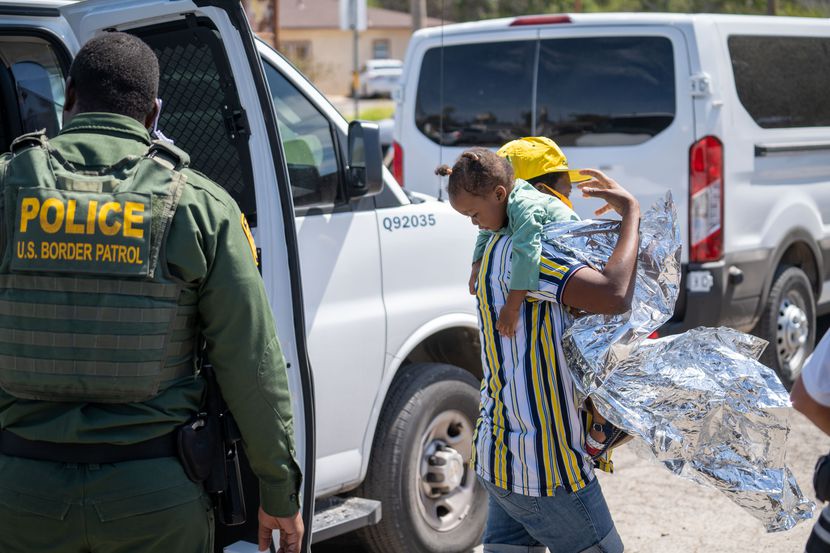
They say it was the worst. Many died there from exhaustion or because of armed gangs that preyed on them, said Donacien, 31. They thought they would die, too.
Like many others, they migrated to Brazil, living there for years after the 2010 Haitian earthquake left more than 200,000 people dead and destroyed their country’s already weak economy. But Brazil’s own once-strong economy soured when the coronavirus pandemic hit.
“We had to leave for lack of work,” Donacien said. “We are such good workers,” he added, stretching his slim arms outward for emphasis.
Weeks after leaving Brazil, the couple made it to the impromptu Del Rio camp that ultimately sheltered nearly 15,000 people. The couple slept outdoors.
Eventually, authorities gave them passage into the U.S. interior to fight for a chance to stay, apparently because they were a family.
“We were saved,” said Donacien, his wife at his side, smiling in the heat of the evening.
They were among the lucky ones.
Moving quickly
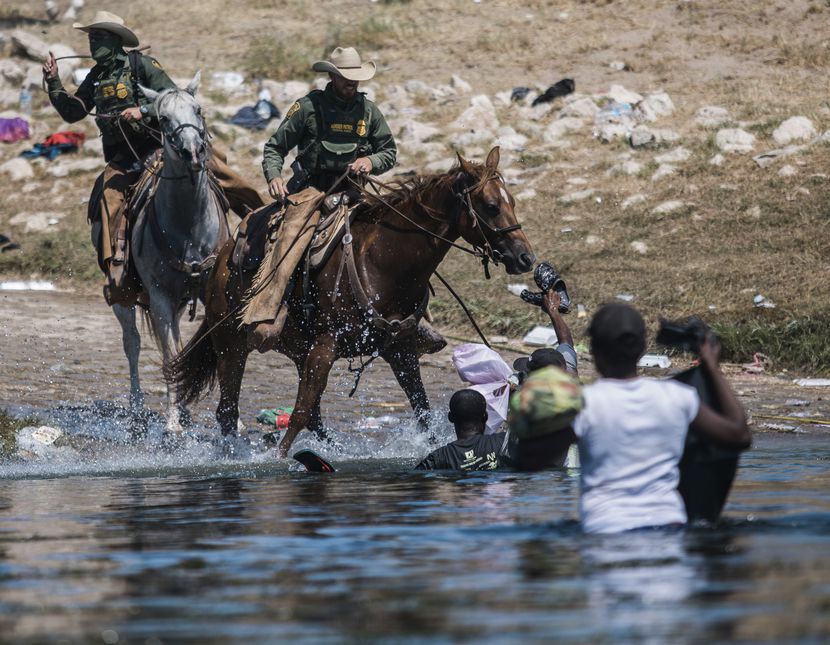
Many of the Haitian migrants who originally fled home because of natural disasters came up through Central and South America. In each place that they landed they were unable to create a community and a permanent home.
But the speed at which so many people mobilized in the recent rush on this town of 35,000 people surprised many. Even the smugglers were overwhelmed in the southernmost state of Chiapas, Mexico, said Ruben Figueroa, a migrant rights advocate there. Two weeks ago, he saw a massive number of Haitians moving through the region, often the first place to see big numbers of migrants congregate to head north.
“The traffickers didn’t want to deal with such a stream,” Figueroa said. “Communities were helping the migrants, fighting with taxi drivers who tried to overcharge them.”
Some theorized that the Mexican authorities in Chiapas had to have known that the Haitians were moving through the area where they in recent years have been working to break up large groups.
“It is hard to figure out how this happens without the Mexican government knowing,” said Andrew Selee, president of the D.C.-based Migration Policy Institute. “This wasn’t a caravan in the traditional sense. This was a lightning move.” Some migrants said they used social media such as WhatsApp and simple news reports to chart the path to the Texas border.
Pedro Fils-Aime, a Haitian with a 10-year-old daughter who was allowed into the U.S. to seek asylum, smiled when asked about how fast the Haitians were able to move across Mexico.
An assist may have come from the multiday annual celebration of Mexico’s independence from Spain. They planned to move quickly during the red-white-and-green flag-waving holidays around the 15th and 16th of September, known as Fiestas Patrias, Fils-Aime said.
“We took advantage of that,” he said. “Because of Patrias, we had free pass.”
Six years earlier, Fils-Aime fled Haiti for a life in Chile, but it became more difficult to live there and make a living as a graphic designer. He wanted his daughter, Reina, to have a better life with a good education, he said. That meant risking the journey to the U.S.
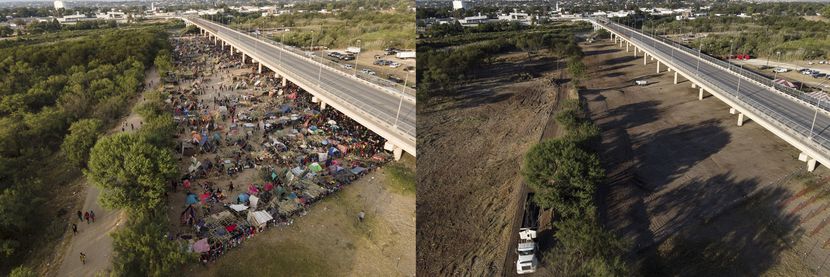
While Haitians clustered suddenly in the thousands at Del Rio, their migration has been building slowly up and down the border. During the first 11 months of this fiscal year, nearly 30,000 Haitians attempted southern border crossings, according to data from U.S. Customs and Border Protection, an agency of the Department of Homeland Security. The figure will skyrocket when September ends.
It is already six times higher than the entire previous year, when CBP apprehended about 4,500 Haitian migrants.
The Haitians arrived quickly in and around Ciudad Acuña across from Del Rio, with many walking into the waters where they rise over a dam in the river, creating an underwater but walkable bridge. The Border Patrol and locals were quickly overwhelmed, and many of the migrants soon clustered under the international bridge, waiting to be processed by federal authorities.
People slept out in the open, or, eventually, in crude shelters made of brush and some in tents. Conditions were squalid, with inadequate plumbing and water supplies.
The sudden arrival of close to 15,000 or more migrants made national headlines by mid-September. Along with the media frenzy came politicians, pastors, more federal officials and Gov. Greg Abbott’s bold effort to create a temporary “steel barrier” of state vehicles to disrupt the flow.
But federal officials were also moving quickly to rapidly send back some migrants and process others for later immigration court dates. The Border Patrol dropped off many migrants at a respite center run by the faith-based nonprofit Val Verde Border Humanitarian Coalition in Del Rio.

Lupita De La Paz, a center volunteer, greeted arriving migrants in Spanish. Many spoke Spanish from their years in Chile. “Welcome to Del Rio,” she said. “We are a small community but we are here to help you.”
Michel Ferdil was exhausted but grateful he and his wife had been released from the misery of the migrant camp. He showed his immigration papers that told him that within 60 days of reaching his final destination, he needed to report in.
“I know I need a lawyer,” he said, sensing he faced a labyrinth of an immigration system. He was headed to Florida, home to some of the largest Haitian and Haitian-American communities in the U.S.
Tiffany Burrow, operations director at the center, said in all of August, they’d helped about 3,600 people of all nationalities, including migrants from Haiti, Venezuela and Cuba. But in the first three days of this week, there were already more than 1,100 persons released to them.
“We have been waving a white flag since January,” Burrow said. “There is a point when the numbers are so high…” Then, Burrow threw up her hands to indicate how unpredictable the rest of the year would be.
Burrow emphasized that most of the migrants have family in the U.S. already and arrange their own transportation from the border. The respite center does provide water, food, backpacks and outdoor charging stations for cell phones. The respite center does not provide indoor sleeping accommodations.
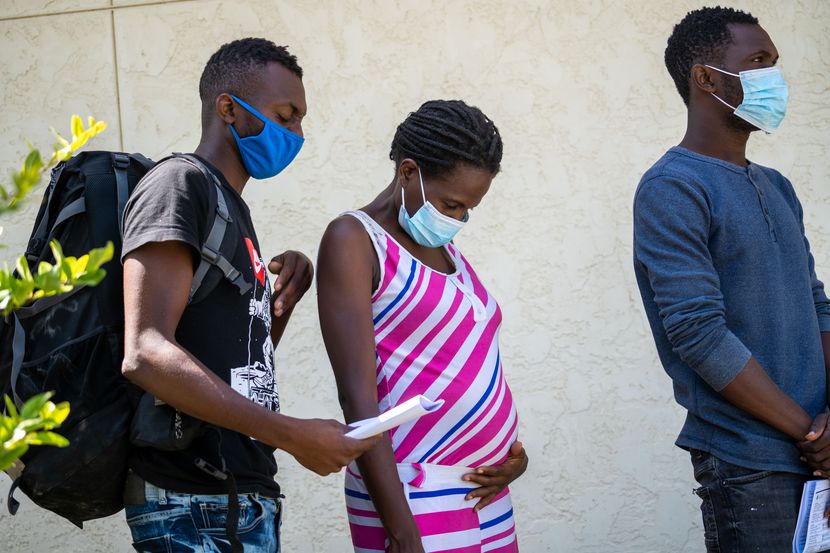
In the evenings, Haitians washed their clothes in public sinks, draping wet clothing over the handrails around the center. Portable toilets were set up against the side of one of the building’s walls. Hand-washing stations with sanitizing soap could also be used. And a big tent with a plastic ground cover could be used as a resting spot in the adjacent park.
Television reports of the swelling camp of Haitians propelled Jean Delmas, a pastor with the Haitian Baptist Church in Fort Worth, to drive his van nearly 400 miles to Del Rio with his Haitian-born wife, Nahome, to help.
“If there were jobs and security in Haiti, people would stay there,” Delmas said. That’s what he and his wife tried to do in 2009 when they married and settled in Haiti, though his wife had lived in the U.S. and had U.S. citizenship. Now both are U.S. citizens, forced to leave after the devastation of the 2010 earthquake.
The couple collected money from their congregation and another in Dallas to help the newcomers. Tuesday, they drove processed Haitians to the airport in a small van, making multiple trips.
There, Delmas saw Abbott, arriving for his news conference to announce the Biden administration was to blame for the influx of Haitians and that he had surged the Texas National Guard into the area.
At one point, Delmas was infuriated because airport officials wouldn’t allow the Haitians entry, even pregnant women who needed to use the restroom.
“I said, ‘Guys, you cannot do that. They are pregnant.’ ”
The Haitians were allowed into the Del Rio airport soon after.
Not all were so lucky.
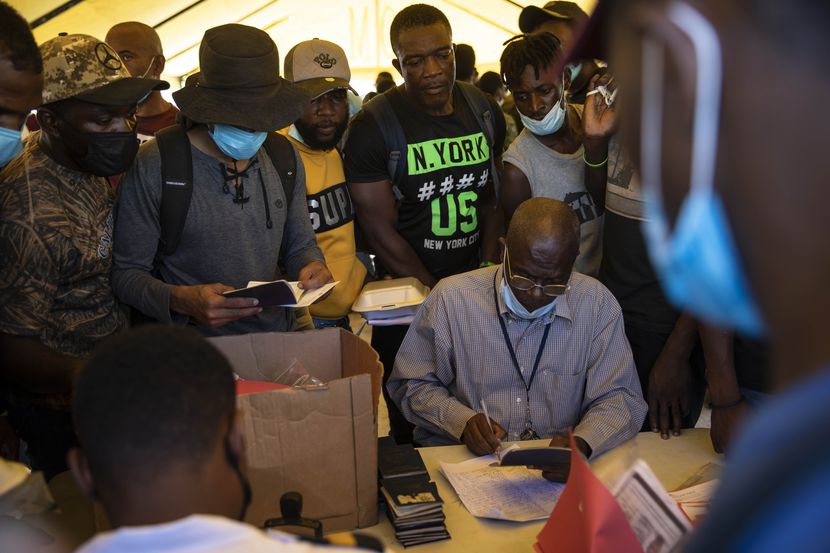
By Saturday morning, more than 2,300 migrants had been sent back to Haiti — a nation that is still in such turmoil that a “no travel” warning has been issued by the State Department, just as in Afghanistan and Syria. “These flights will continue on a regular basis,” a DHS spokesperson said Friday night.
Some migrants fled back across the Rio Grande after word of deportations spread. Others who left the camp were processed by federal authorities and issued notices to self-report to federal agencies within 60 days. About 4,000 were placed into categories that could lead to an expulsion, or processing for removal that could include release with notices of further immigration proceedings, a DHS spokesperson said.
The Donaciens say a return to Haiti isn’t an option for them. “Haiti is so complicated with political and economic problems and there is no security,” Jameson Donacien said. “There is no president and there is nothing.”
As an inky indigo night descended, the couple made plans to sleep on the grass with about two dozen other Haitians. The respite center was closed for the night.
The next day, they headed to Houston.







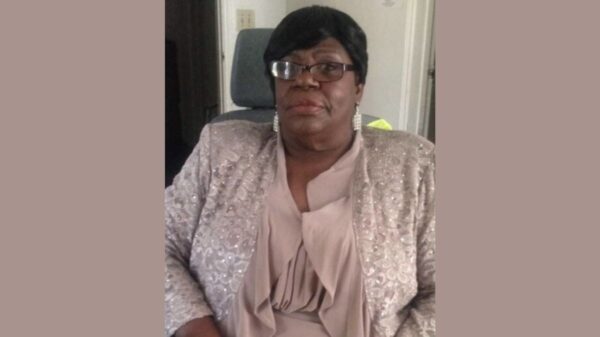

You must be logged in to post a comment Login